A common way to determine energy intensity in manufacturing is to divide energy cost by production volume, resulting in kWh per car or m3 per pound of bread. This simplistic approach may hit energy manager where it hurts the most – at evaluation of completed projects. A good well-implemented project may show dismal savings if any savings at all.
What is inside energy intensity?
Let’s consider a production process that uses 150kWh for 1000 widgets. Average energy intensity is 0.15 kWh per widget.
Although simple, this ratio is highly impractical. It may be acceptable for a glossy booklet, but in real manufacturing not all energy consumption is changes with production volume; part of energy is used during idle runs (warm up, re-tooling, etc). For simplicity let’s say that in our production process 50kWh is fixed energy use and the remaining 100kWh is spread over 1000 widget with 0.1 kWh per widget intensity.
Production change can show as fake energy intensity change
And now fun begins: average energy intensity varies with production.
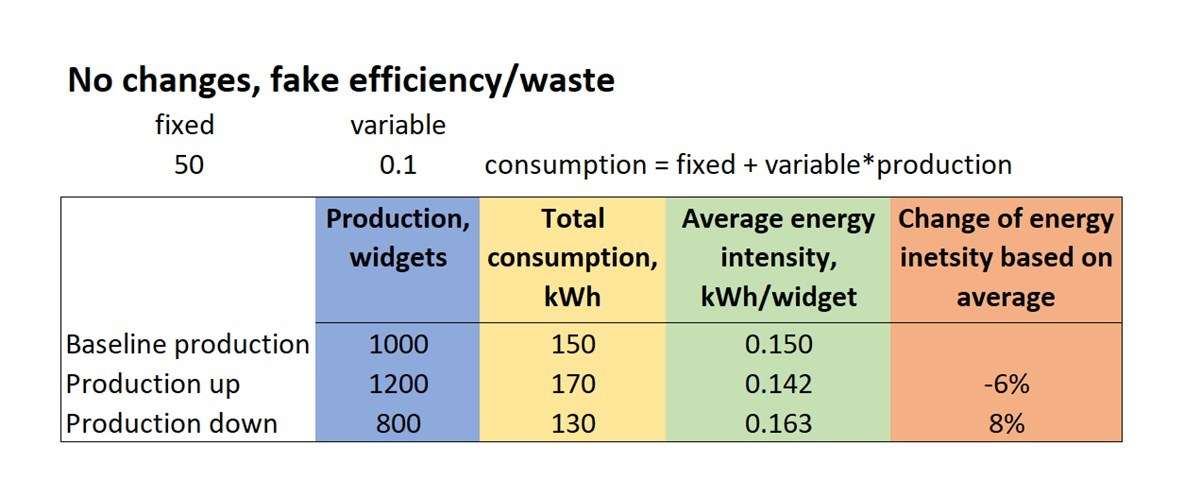
With no changes in actual energy efficiency average energy intensity shows material changes depending on production volume. Miracle.
Increased equipment efficiency may disappear
Now let’s see what happens when energy manager implements a project that reduces total energy consumption by 10%: from 150kWh to 135kWh for 1000 widgets.
- Project improves energy efficiency of machine – high efficiency motor or VFD or new air filters. His success can be stolen (or inflated) by production change.
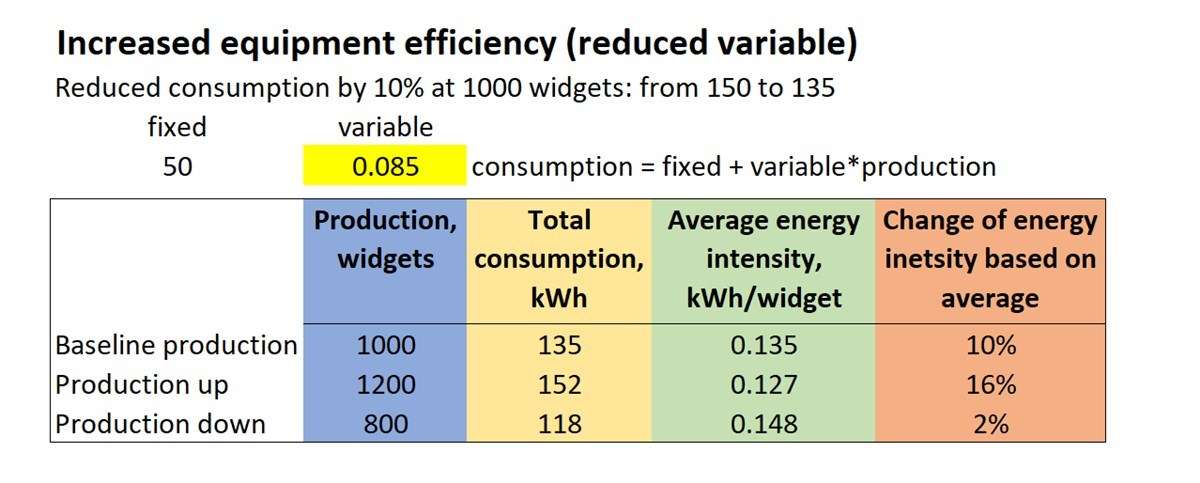
2. Projects that reduce fixed component of energy consumption, e.g. idle runs, face similar risks from production variation.
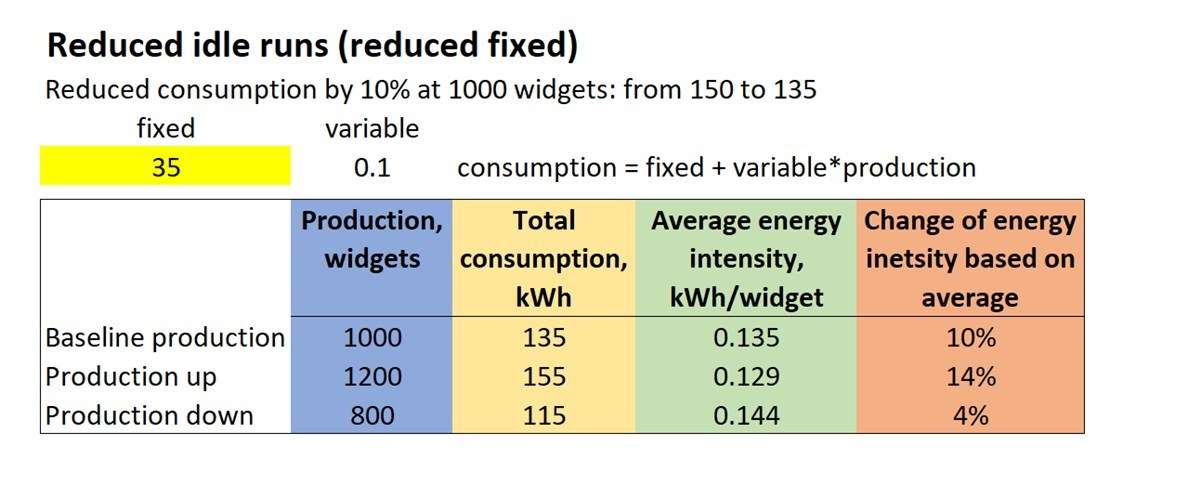
How to avoid risks of false reporting of project results?
In both cases – equipment efficiency improvement and idle run reduction – total energy consumption was misreported simple because a wrong ratio was used. Simple does not mean appropriate.
To avoid risks of presenting fake results we recommend to adhere to recommendations of IPMVP: replace average energy intensity with fixed and variable energy consumption parts through the use of regression analysis.
This change will allow energy manager to produce reliable reports and avoid those awkward moments in the boardroom when saving do not show up on the bill and CFO demands an explanation. To properly separate fixed a variable parts IPMVP recommends using regression analysis.


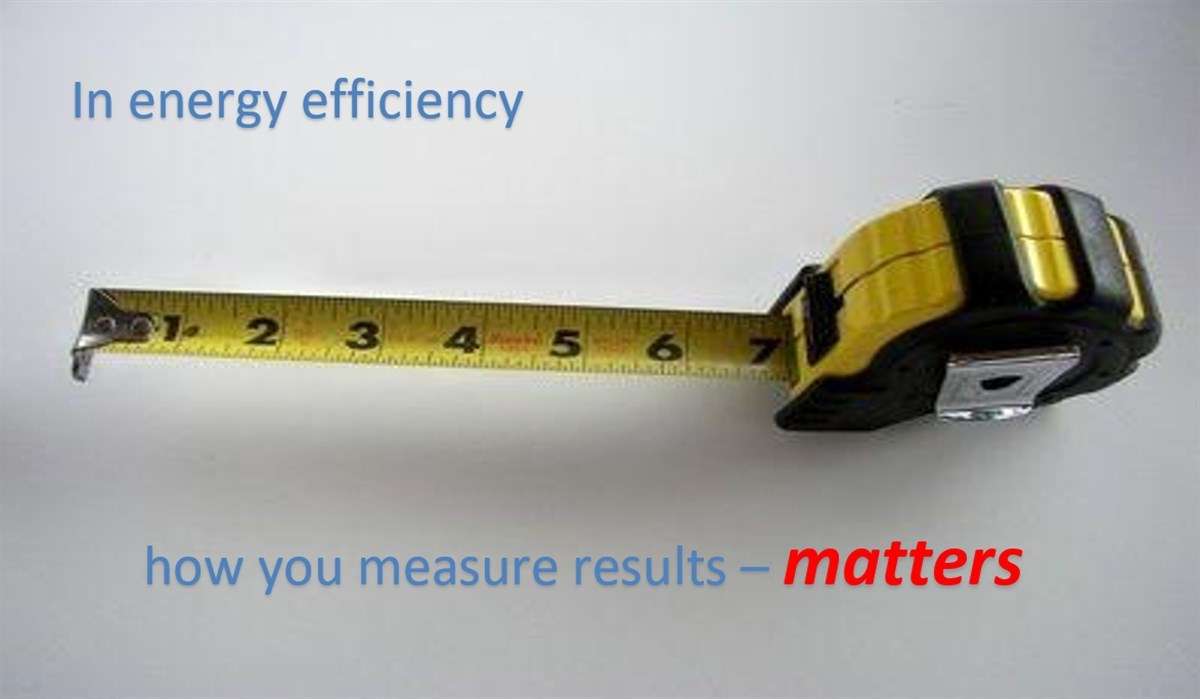

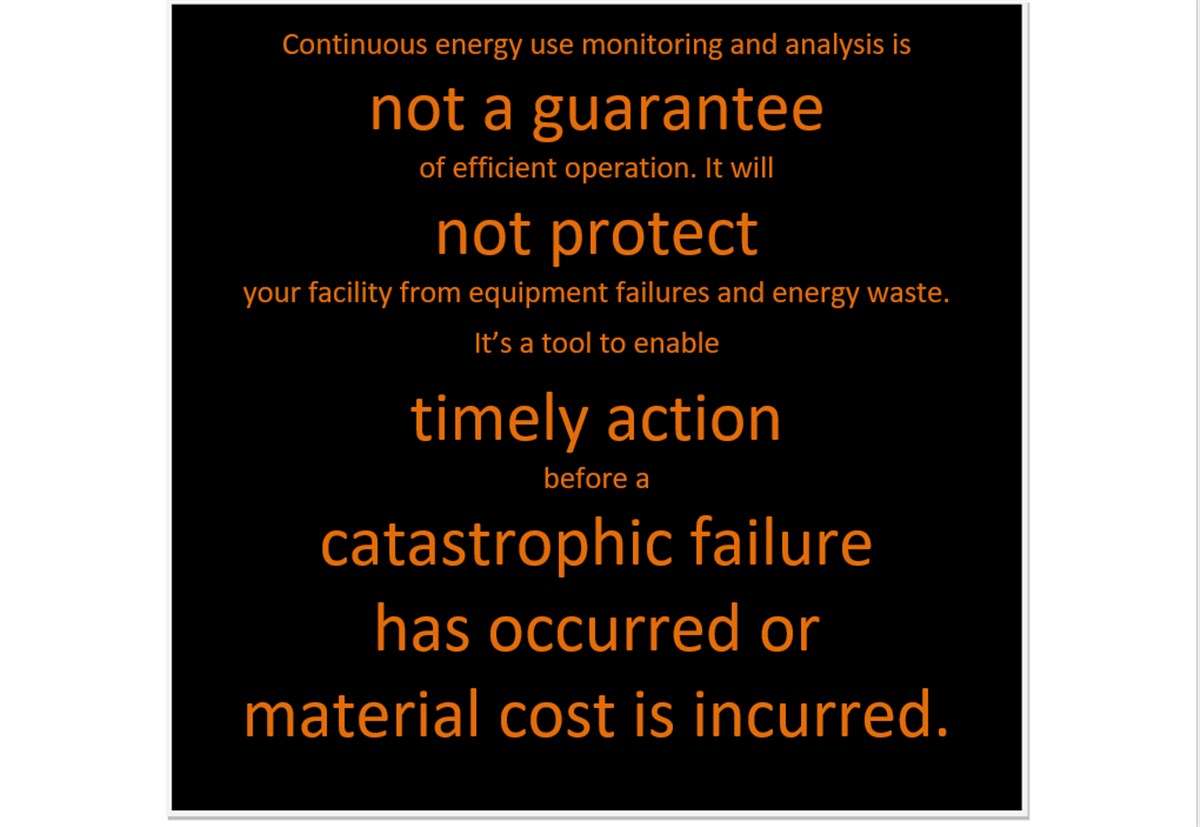

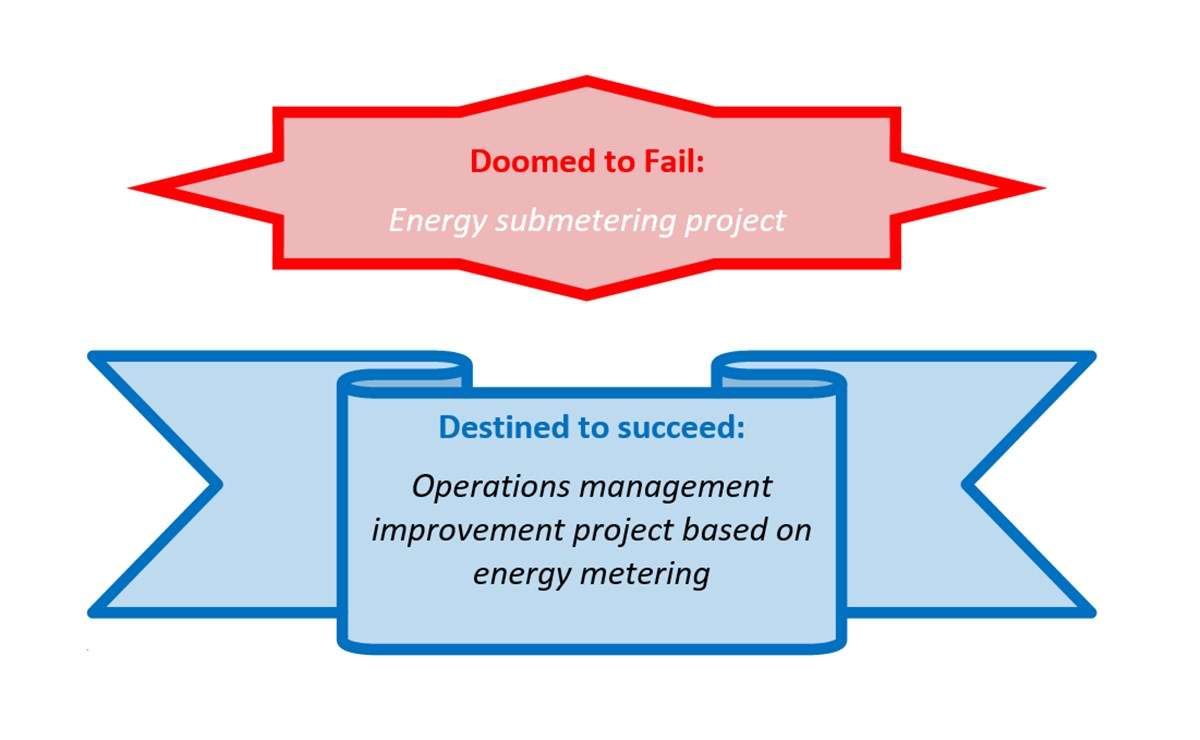
Leave A Comment